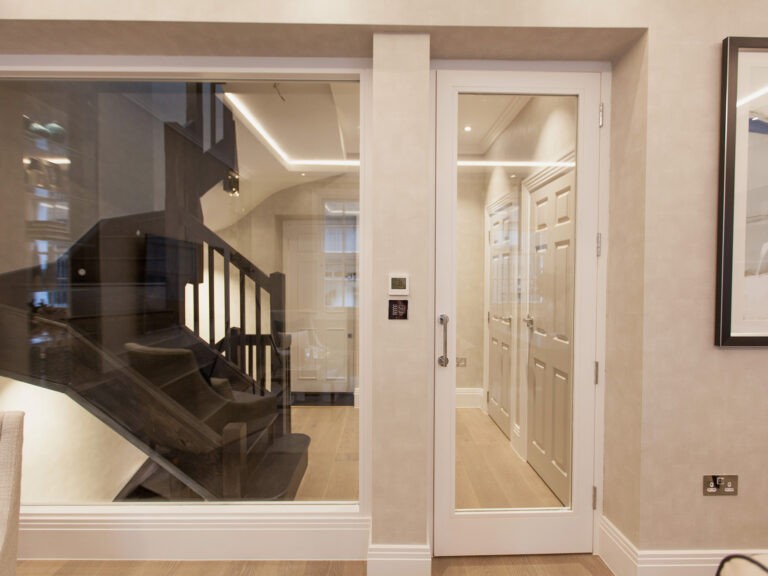Cost Saving Tech for home / businesses

One hundred years ago, not even half of the United States had electricity in their homes. Fast forward to 2021: it is a very expensive necessity. Managing power usage has become somewhat of a phenomenon in recent years, with consumers and business owners vying to minimise costs without having to make any drastic compromises. Now the smart technology market is flooded with offerings that promise to cut operational costs.
From smaller-scale implementations such as smart appliances that run at less expensive off-peak hours and devices that can automatically turn off lights at specific times to GPS tracking that detects when a household member is close by to turn the heating on and room motion detection that ensures energy isn’t being used in uninhabited rooms, if there is an electrical component that can be turned off and on, smart technology can now control it.
However, these implementations on average take 3-5 years to produce any ROI as they are costly to install. Therefore, some arguments suggest that these devices save money is too fraught, but the ultimate convenience that this technology offers is the greatest benefit. For those wanting to remain in their home for years, it is undeniably an efficient change to make, and for those planning on moving before any ROI is seen, the added value to a home with smart technology is a valuable selling point.
Moreover, businesses are increasingly looking to reduce energy costs by turning their buildings smart in light of the recent energy crisis. From automated lighting and shading to whole smart management systems, there are now many options for maximising productivity and minimising outgoings. This post will aim to discover some of the latest smart technology cost-cutting and comfort-creating offerings and look at whether, ultimately these devices are worth it.

Cost Saving For Smart Homes
An overarching elegance of the way smart technology conserves energy is that it does not energy restrict or create any kind of compromise on your lifestyle or the way your business space operates to create a saving. The way these devices create savings is through intelligent tracking of your lifestyle or operating style and detecting areas where energy is being spent where it is not needed.
Smart home features range hugely, they are not all super advanced for those who just want to conquer a few areas of the home. For example, smart thermostats are simple installs that can track the occupied rooms and ensure they are up to temperature when in use and not needlessly heated when you are out. On the other end of the spectrum, it could be a full system overhaul that is controlled from a central hub (add brand example) where every appliance, bulb and radiator is connected in a HEMS system (Home Energy management system).
According to PointCentral, “these systems can produce average savings of 5-22%.”
Outdoor reset control
Weather responsive systems, also known as ‘outdoor reset control’, use a sensor on a boiler and a sensor attached to an external façade of a home to control the temperature, some also use a third sensor inside the home to detect heat from other sources such as fireplaces. These sensors balance the heat output with how the natural environment is performing. A popular example of these weather-controlled heating systems is offered by the brand tado. tado utilises the weather forecast to maximise the use of natural heating sources such as the sun; by detecting it is a sunny day and heat will enter the home naturally, tado turns the home heating down slightly to reduce wasted output. Find out more about tado and their smart outdoor reset control system.
Cost Saving For Smart Business

Firms are now more than ever looking for ways to reduce operational costs in buildings where expenditure on energy is a huge outgoing. Smart buildings that integrate multiple solutions can maximise energy savings. According to Verdantix, smart buildings can achieve 20% annual energy savings by integrating smart technology which is often down to space utilisation. These systems enhance employee productivity and visitor comfort while reducing energy consumption. These systems not only control and maximise energy efficiency, but they also provide extensive data and visibility to its operators as to the company’s energy usage.
Smart solutions in smart buildings range from HVAC (Heating, Ventilation and Air Conditioning), Lighting, Plug loads and shading to distributed energy resources and human operation
According to the American Council for an Energy-Efficient Economy, in 2017 certain energy savings using smart technology were as follows:
- In HVAC systems using a variable frequency drive, the savings were between 1550%.
- Using a smart plug produced 50-60% savings.
- Using smart lighting controls produced 45% energy saving.
- Using an automated shading system produced 21-38% savings.
These savings are substantial and desirable, but the upfront costs for these investments in buildings are high and particularly for small to medium-sized businesses the upfront capital needed to make these changes is out of reach. However, for large corporations with available funds to make these changes, the results in energy saving are impressive and the overall quality of the business is improved.
Smart Workplace Management Solution
Sony TEOS is a complete workplace management solution. As well as useful productivity features such as scheduling capacity and the ability to quickly identify and pinpoint technological issues with any device in the network, TEOS also streamlines the control and maintenance of any connected devices in a business space, from boardroom meeting displays to receptions and other public areas in an all-in-one system monitors the status of all displays and devices.
Boardroom lights and displays, unused offices and bathrooms are no longer needlessly heating or lit when not in use, or during the night. This scheduling capacity allows businesses to maximise energy efficiency. Using smart workplace management, business can be done efficiently and create stronger output through centralised solutions while benefiting from reducing energy costs.
Are Smart Cost Saving Solutions Worth it?
Smart automation undoubtedly reduces overall operating costs in homes and businesses. For homeowners wanting to capitalise on future-proofing their space, smart technology adds value and livability to your home. It feeds into corporate social responsibility and governance, reducing carbon footprint for businesses. Despite the initial investment in the technology itself, the combined reduced overall cost over time and the ultimate comfort, ease of use and wow-factor for businesses make these smart improvements worth it.
Next on the blog: Smart health and fitness: how can smart technology improve your health?

